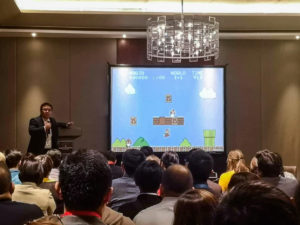Over a decade ago, a computer named Deep Blue beat chess master Garry Kasparov in a highly publicized six-game match — the first time a machine had ever defeated a world champion in match play. In a latter year, researchers used machine learning to develop codes and algorithms that teach a computer how to play Super Mario Bros. and they continue to explore how Mario could play his own game.
But more than outplaying games, the capabilities of Artificial Intelligence (AI) have evolved massively and the digital revolution has shaped the world’s working processes. For businesses, efficiencies drive profit that’s why many companies across the globe are investing in AI.
A study by Deloitte showed that 41% of companies have fully implemented or have made significant progress in adopting AI and cognitive technologies within their workforce. This means AI is not a futuristic vision anymore, but a current trend being implemented and delivering results in workplaces around the world.
However, the same study noted that only 17 percent of global executives report they are ready to manage a workforce with people, robots, and AI working side by side. What these leaders do not realize what they are missing out.
“AI and people should be working together to be more productive and remain competitive,”

Beyond the scope of what the human mind can encompass, Tan recognizes that there are critical areas computer are better than humans that could be leveraged. “Once a computer learns, it just keeps on getting better. We should not be threatened by AI. Instead, we should use it to our advantage,” he added.
Computers, equipped with AI technologies, have a much better memory than humans. These machines can help compute, visualize, predict, and produce more accurate reports based on specific standards set by its user. “Embrace the technology and take advantage of where technology is good at,” Tan emphasized.
There are many different ways that AI technologies such as machine learning and robotic process automation (RPA) are being used to solve real workplace situations. For business process outsourcing (BPO) companies, for example, dealing with hundreds of raw and unorganized data across multiple sources takes a lot of time and is downright mind-numbing. With the use of machine learning, structured data can be automatically gathered from sources such as spreadsheets, emails, and transcriptions and then normalized, corrected, and loaded into another system for further processing.
Invoice processing is also a prime example of AI’s potential for driving efficiency. Through RPA or the use of software bots to automate routine business practices, finance and human resource personnel are spared of long hours manually transferring data from various invoice formats into their company’s database while dealing with any discrepancies. Virtual automation robots can automate data input, error reconciliation, and some of the decision-making required by the staff when processing invoices. At the same time, automation is able to reduce errors and limit manual exception handling.
The development of AI systems and cognitive tools is driving significant changes to the way work is organized and completed. By utilizing these technologies, companies are already learning how they can streamline processes and create more efficient workforces. They are being proactive in looking at ways that existing employees can be retrained to work with technology. While initial predictions were for automation tools and AI to kill jobs, these technologies are being used to support and enhance the work of human employees.
The Innovation Forum 2019 is organized by the Australian-New Zealand Chamber of Commerce Philippines, Inc. which tackled how customer-facing businesses can drive successful change in their business through innovations such as robotics and automation.
Get your free Robotic Process Automation (RPA) Software: Download here